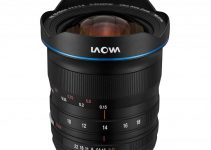Despite the more intensive system and storage requirements, shooting in raw gives us a ton of options, the most flexibility and the highest possible image quality out of the camera. It is a significant workflow alternative, especially if you want to future-proof your material and it is the best way to go for color grading and VFX work as well.
However, working with raw could be tedious and time-consuming in many situations. The best case scenario is to have the flexibility and efficiency of working with a professional and edit-friendly codec such as ProRes or DNxHD/DNxHR while taking advantage of the raw assets at the same time. Fortunately, there are some efficient and practical workarounds in Adobe Premiere Pro CC when working with this format. In the next video tutorial presented by Mattias Burling, we’ll see how to edit and colour grade Blackmagic Cinema Camera Raw inside Premiere Pro swiftly, even on a modest PC or Mac workstations.
As we know, when shooting in the highest quality format on the Blackmagic cinema cameras, the CinemaDNG files are stored as individual frames in separate folders. Premiere Pro CC opens the files as a single clip in the Media Browser that you can easily import in your Project Bin. Once your raw files are in your Project Bin, you can then drag and drop them on your timeline.
Inside your timeline select each of the clips and with the right click choose the Source Settings. Thus, you won’t have access to all the options that Adobe Camera Raw would give you indeed, however you can still adjust the Exporsure, the White Balance and the Tint of your clip which is a great starting point. As working with raw files, you can always go back and do some additional tweaks later. You can also adjust the settings in the Project Bin if you prefer.
The next step in the Mattias Burling suggested workflow is to add an Adjustment Layer over the clips on a separate track and to apply Brightness and Contrast filter. For accomplishing a particular look and further colour-grading adjustments, you can add Film Convert or Magic Bullet Colorista plugins to another adjustment layer.
Furthermore, you can always re-open your Raw clips inside Adobe Camera Raw and export them in more edit-friendly codec after or you can send your edit to Davinci Resolve for more precise colour-corrections via .xml.
Generally, using this workflow would be most beneficial for BMCC owners, where you have the option to shoot 2.5K in Raw only that is great for re-framing and preserving the higher resolution after downscaling to 1080p. Editing Raw inside Premiere Pro gives us more control and more options to manipulate and push the image in different directions. The best part is that you can always go back and change everything from scratch.
Disclaimer: As an Amazon Associate partner and participant in B&H and Adorama Affiliate programmes, we earn a small comission from each purchase made through the affiliate links listed above at no additional cost to you.
Claim your copy of DAVINCI RESOLVE - SIMPLIFIED COURSE with 50% off! Get Instant Access!




